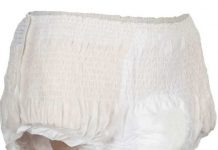For older adults, increased urinary frequency is fairly common. “As people age, in general, the bladder does lose some of its capacity. The Journal of the American Medical Association reports that the condition affects about 200 million people worldwide.At least one out of every 10 people over the age of 65 experiences UI. Despite its prevalence, the stigma surrounding UI causes many people to hide the fact that they have the problem, even though it can significantly affect their quality of life.For related information on treatment options of urinary incontinence, visit:
http://www.medicalnewstoday.com
Urinary incontinence is common in elderly people. Urinary incontinence is caused by many factors. Stress, medications, urge and overflow can cause urinary incontinence.
Stress incontinence:
It is caused due to the increase in pressure from within the abdomen such as when sneezing, laughing, coughing and lifting heavy weights. This can happen when pelvic muscles are weakened.
Medications:
Some medications such as high blood pressure drugs such as doxazosin and prazosin and muscle relaxants can cause urinary incontinence.
Urge incontinence:
In this type, you feel strong urge to pass urine in small amounts. This occurs due to the bladder wall muscle called as detrusor muscle, which will be overactive. It contracts to squeeze out urine before bladder is full.
Overflow incontinence:
The bladder which holds the urine builds up to the point where the bladder can expand no longer. This condition occurs when obstruction occurs in the urinary tract or damage occur to the nerves in the bladder.
Treatments of urinary incontinence:
Behavioral techniques:
Behavioral therapy includes pelvic muscle rehabilitation, weight loss, diet change, and retraining the bladder [Diet changes to lose weight].
Pelvic muscle rehabilitation: It includes exercises for pelvic muscle, biofeedback therapy, pelvic floor electrical stimulation and vaginal weight training. All these techniques help to strengthen the vagina and urethra muscles.
Pelvic muscle exercise or kegel exercise includes contracting the vagina, urethra and rectum muscles for a short period of time and relaxing them.
In biofeedback training, several electrodes are placed on the abdomen of the woman and a probe should be placed inside the vagina. A display device shows how the woman is contracting her muscles and how strong she is contracting.
In bladder training method, the person is taught to hold on for certain amount of time and slowly the holding time is increased. This method helps the person to hold the urine for longer periods.
In weight loss, excess weight should be reduced in the abdomen to relieve pressure on the pelvic floor and bladder muscles.
Balanced diet include preventing caffeine based products, carbonated beverages, citrus juices, fruits, alcohol and high spicy foods.
Medications:
Medications such as ephedrine, imipramide, pseudoephedrine and phenylpropranolamine help in preventing urinary incontinence. Collagen implants are also used to treat stress incontinence.
Pessary:
A pessary is a stiff ring that is inserted into the vagina of woman by the doctor or nurse, where it presses against the vagina wall and the nearby urethra. This pressure helps in repositioning the urethra, which leads to less stress leakage.
Surgery:
Laparoscopic bladder suspension procedure is an alternative surgery for urinary incontinence. In this procedure, incisions are made on the abdomen and through these openings the bladder neck is sutured or stapled to the pubic bone.
You should follow the behavioral techniques to control urinary incontinence and visit toilet frequently to prevent leakage.










